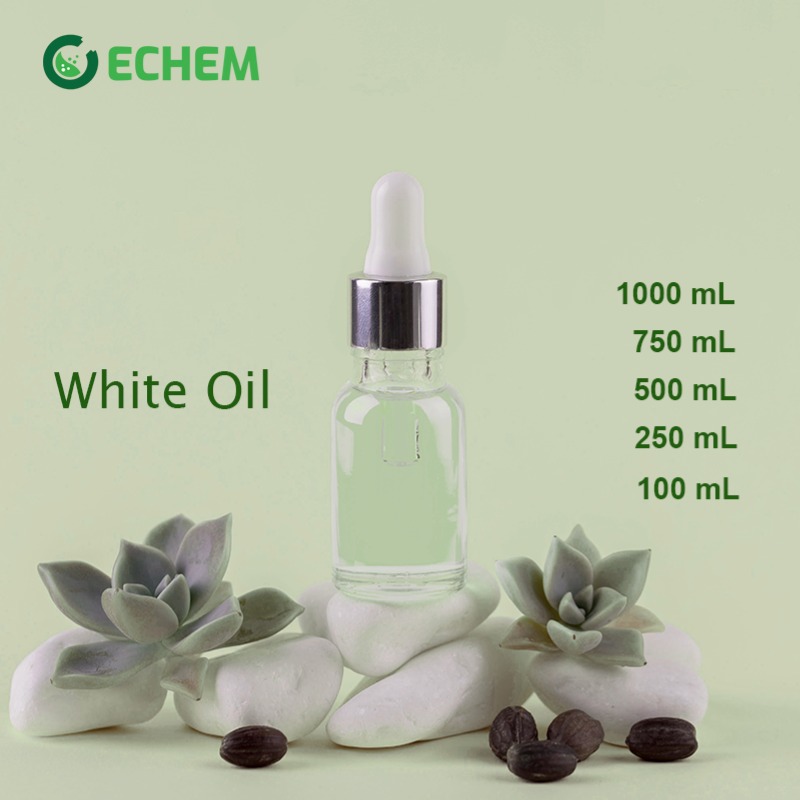White oil, also known as mineral oil, is a colorless, odorless liquid derived from petroleum. It's a versatile product with numerous applications due to its unique properties. Here's a closer look:
10 Key Points:
- Origin: Derived from petroleum through a refining process.
- Appearance: Colorless, odorless, and has a light, oily texture.
- Chemical Composition: Primarily a mixture of saturated hydrocarbons.
- Inert: Doesn't react readily with other chemicals, making it stable and safe for many uses.
- Hydrophobic: Repels water, creating a moisture barrier.
- Lubricating Properties: Reduces friction between surfaces, making it ideal for lubricants.
- High Viscosity: Varies depending on the grade, offering options for different applications.
- Non-Volatile: Doesn't evaporate readily, ensuring long-lasting effects.
- Biodegradable: Certain grades of white oil are biodegradable, minimizing environmental impact.
- Food-Grade Options: Specific grades are refined to meet food safety standards.
Usage Recommendations:
- Pharmaceuticals and Cosmetics:
- Moisturizer in lotions and creams.
- Lubricant in ointments and capsule lubricants.
- Base for creams, makeup, and other products.
- Food Industry:
- Food-grade lubricant for machinery.
- Release agent for baking pans and food surfaces.
- Defoamer for controlling foam during processing.
- Other Uses:
- Metalworking coolant and lubricant.
- Plasticizer for some plastics, enhancing flexibility.
- Textile lubricant for spinning and weaving.
Cautions:
- Grade Selection: Ensure the correct grade for the application. (USP grade for food and medicine).
- Inhalation: Avoid inhaling white oil vapors.
- Skin Contact: Prolonged contact can irritate sensitive skin. Use gloves for handling.
- Combustible: White oil is flammable, so store it away from heat sources.
- Improper Disposal: Do not dispose of white oil down drains. Follow local regulations for disposal.
White oil, also known as mineral oil, is a colorless, odorless liquid derived from petroleum. Here's a deeper dive into its 12 key features:
- Origin: Derived from petroleum through a refining process, separating out desired hydrocarbon chains.
- Appearance: Colorless, odorless liquid with a light, oily texture. It may have varying degrees of viscosity depending on the grade.
- Chemical Composition: Primarily a mixture of saturated hydrocarbons, meaning they have single bonds between carbon atoms, making them relatively stable.
- Inert: Doesn't readily react with other chemicals, making it a stable and safe option for many applications.
- Hydrophobic: Repels water, creating a moisture barrier. This property is crucial for its use in lubricants and protective coatings.
- Lubricating Properties: Reduces friction between surfaces, making it ideal for lubricants in machinery, cosmetics, and pharmaceuticals.
- Variable Viscosity: Different grades of white oil have varying viscosities. Thicker grades provide greater lubrication, while thinner grades are better suited for applications requiring easier flow.
- Non-Volatile: Doesn't evaporate readily, ensuring long-lasting effects for lubricants and moisture barriers.
- Biodegradable (Some Grades): Certain grades of white oil undergo biodegradation, minimizing environmental impact. Look for "readily biodegradable" options.
- Food-Grade Options: Specific grades are highly refined to meet strict food safety standards. These are used in food processing and packaging.
- Flammability: White oil is flammable, so store it away from heat sources and handle it with caution.
- Improper Disposal Concerns: Do not dispose of white oil down drains. Follow local regulations for disposal, as some grades may require special handling.

Login To Comment